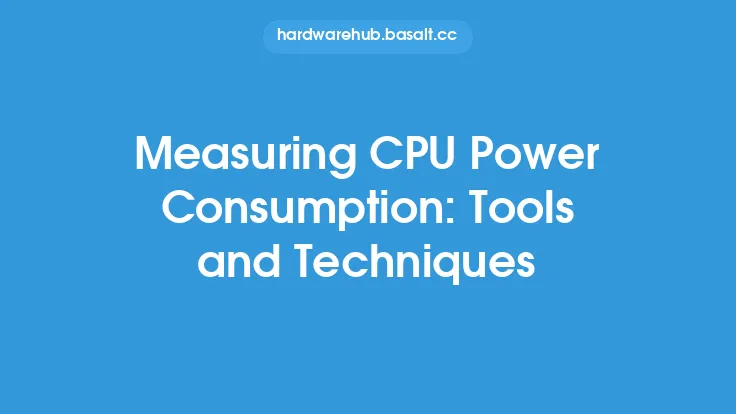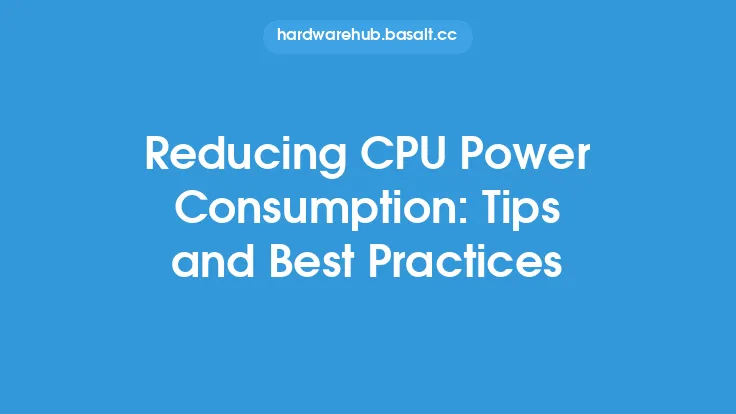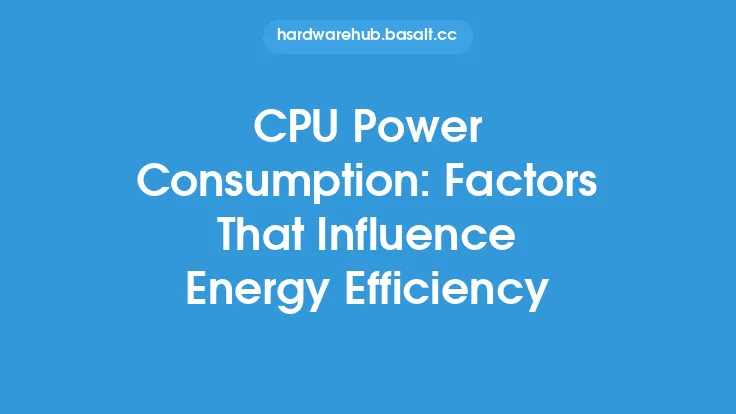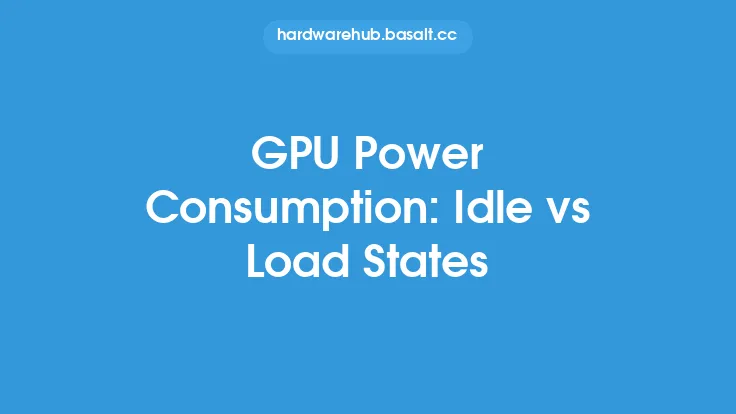When it comes to CPU power consumption, there are several usage scenarios that can significantly impact the amount of energy a processor uses. In this article, we will delve into the details of CPU power consumption in different usage scenarios, including idle, load, and stress tests. Understanding how CPU power consumption varies in these scenarios can help users and system administrators optimize their systems for better performance and energy efficiency.
Introduction to CPU Power Consumption
CPU power consumption is a critical aspect of computer systems, as it directly affects the overall energy efficiency, heat generation, and performance of the system. The power consumption of a CPU is measured in watts (W) and is typically specified by the manufacturer as a thermal design power (TDP) or a typical power consumption. However, the actual power consumption of a CPU can vary significantly depending on the usage scenario. In general, CPU power consumption is influenced by factors such as the type of workload, clock speed, voltage, and cooling system.
Idle Power Consumption
Idle power consumption refers to the amount of energy a CPU uses when it is not performing any tasks or is in a low-power state. In this state, the CPU is still powered on but is not executing any instructions. The idle power consumption of a CPU is typically much lower than its maximum power consumption and can range from a few watts to tens of watts, depending on the processor model and architecture. For example, a modern Intel Core i7 processor may have an idle power consumption of around 2-5 watts, while a high-end AMD Ryzen processor may have an idle power consumption of around 5-10 watts.
Load Power Consumption
Load power consumption refers to the amount of energy a CPU uses when it is executing tasks or running applications. The load power consumption of a CPU can vary significantly depending on the type of workload, with tasks such as video editing, 3D modeling, and scientific simulations requiring more power than tasks such as web browsing, email, and office work. In general, the load power consumption of a CPU is higher than its idle power consumption and can range from tens of watts to hundreds of watts, depending on the processor model and workload. For example, a CPU running a demanding video editing application may consume around 50-100 watts, while a CPU running a simple web browser may consume around 10-20 watts.
Stress Test Power Consumption
Stress test power consumption refers to the amount of energy a CPU uses when it is subjected to extreme workloads or stress tests. Stress tests are designed to push the CPU to its limits, often by running multiple threads or processes simultaneously, and can help identify potential issues with the CPU or system. The stress test power consumption of a CPU is typically the highest of all usage scenarios and can range from hundreds of watts to over 1 kilowatt (kW), depending on the processor model and stress test workload. For example, a CPU running a stress test application such as Prime95 or OCCT may consume around 200-300 watts, while a high-end server CPU running a stress test workload may consume over 1 kW.
Factors Affecting CPU Power Consumption
Several factors can affect CPU power consumption in different usage scenarios, including:
- Clock speed: Higher clock speeds generally result in higher power consumption.
- Voltage: Higher voltages generally result in higher power consumption.
- Cooling system: The type and effectiveness of the cooling system can impact CPU power consumption, with more efficient cooling systems allowing for higher power consumption.
- Workload: The type and intensity of the workload can significantly impact CPU power consumption, with more demanding workloads requiring more power.
- Processor architecture: The design and architecture of the processor can impact CPU power consumption, with more efficient architectures generally resulting in lower power consumption.
Measuring CPU Power Consumption
Measuring CPU power consumption can be done using various tools and techniques, including:
- Built-in CPU monitoring tools: Many modern CPUs have built-in monitoring tools that can provide information on power consumption, temperature, and other parameters.
- Third-party software: Software such as HWiNFO, CPU-Z, and Prime95 can provide detailed information on CPU power consumption, as well as other system parameters.
- Hardware power meters: Hardware power meters can be used to measure the actual power consumption of a system, including the CPU, motherboard, and other components.
Conclusion
In conclusion, CPU power consumption can vary significantly depending on the usage scenario, with idle, load, and stress test power consumption being the most common scenarios. Understanding the factors that affect CPU power consumption, such as clock speed, voltage, and workload, can help users and system administrators optimize their systems for better performance and energy efficiency. By measuring CPU power consumption using various tools and techniques, users can gain a better understanding of their system's energy efficiency and make informed decisions about upgrades, cooling systems, and other optimizations.





